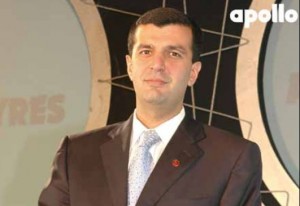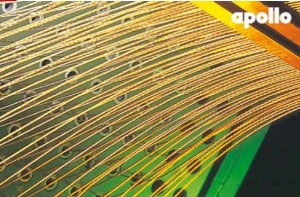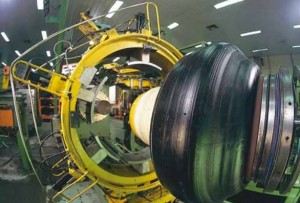 Apollo Tyres Ltd. has restructured its R&D team across its three key geographies to create synergy and greater alignment to the company’s growth plans. This comes soon after a clear decision taken at the management level to sharpen Apollo’s focus on core research and a substantial increase in R&D spends over the next few years. The new structure links the entire organisation along two critical product lines of commercial and personal vehicle tyres, with respective leaders reporting to the Vice Chairman.
Apollo Tyres Ltd. has restructured its R&D team across its three key geographies to create synergy and greater alignment to the company’s growth plans. This comes soon after a clear decision taken at the management level to sharpen Apollo’s focus on core research and a substantial increase in R&D spends over the next few years. The new structure links the entire organisation along two critical product lines of commercial and personal vehicle tyres, with respective leaders reporting to the Vice Chairman.
Mr. Neeraj Kanwar, Vice Chairman and Managing Director, Apollo Tyres Ltd., said: “We have merged our research and development resources of nearly 250 individuals from Africa, Europe and India under the leadership of 2 of our finest experts. While commercial and personal vehicle tyre development and testing will be located in India and The Netherlands respectively, smaller teams across key markets will work on customising each global product to market requirements and testing under local conditions. This structure allows for a sharper focus on basic research, increased usage of alternative raw materials and market-led product performance.”
 Mr. P.K. Mohamed, Chief Advisor, Apollo Tyres Ltd., will lead the commercial vehicle (CV) tyre division, which will be housed on the same campus as the Chennai manufacturing facility, while Mr. Peter Snel, Group Head, Apollo Tyres Ltd., will spearhead the passenger vehicle (PV) tyre unit from a new facility being set up in Enschede, Netherlands.
Mr. P.K. Mohamed, Chief Advisor, Apollo Tyres Ltd., will lead the commercial vehicle (CV) tyre division, which will be housed on the same campus as the Chennai manufacturing facility, while Mr. Peter Snel, Group Head, Apollo Tyres Ltd., will spearhead the passenger vehicle (PV) tyre unit from a new facility being set up in Enschede, Netherlands.
Mr. Mohamed is one of the founding members of Apollo’s technology journey in both commercial and passenger tyres and is credited with some of the most successful tyres manufactured till date. He continues to play a critical role in guiding Apollo’s strategic growth.
Mr. Peter Snel joined Apollo Vredestein over a decade ago and has been a key member of the team which established Vredestein as an ultra-high performance tyre brand.
 Decision on the location of the two centres was taken on the basis of the current and potential CV and PV markets. The Middle East and Asia constitute nearly 59 per cent of the global commercial tyre market, while Europe and North America comprise 51 per cent of the world’s passenger tyre sales. This would enable both the R&D units to have closer interaction with OEM and replacement customers, testing centres, raw material suppliers and research institutes.
Decision on the location of the two centres was taken on the basis of the current and potential CV and PV markets. The Middle East and Asia constitute nearly 59 per cent of the global commercial tyre market, while Europe and North America comprise 51 per cent of the world’s passenger tyre sales. This would enable both the R&D units to have closer interaction with OEM and replacement customers, testing centres, raw material suppliers and research institutes.
Commented Mr. Mohamed: “Our clear focus is on bringing to the market leaner yet robust products for the commercial segment which deliver on the parameters of lower fuel consumption, increased tyre life and added safety features.”